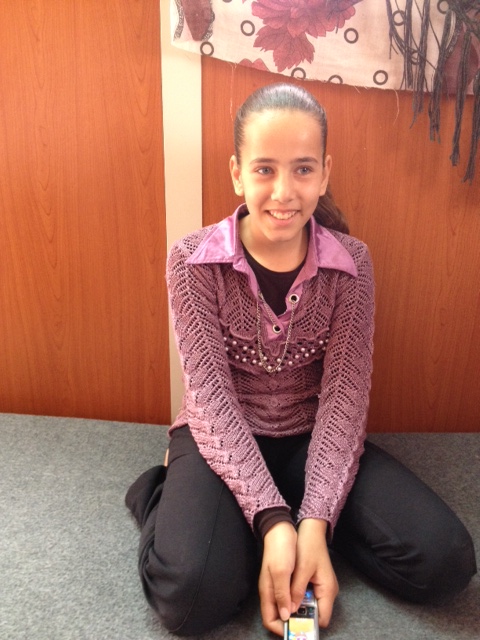11-year-old Shahad Mahmoud Al-Adawi and her family were forced to flee Syria in 2013 after the heavy bombardment of their hometown of Daraa.
The family eventually found safety in Jordan's Za’atari refugee camp in Jordan but a medical examination at the camp by the Jordanian Disability Network revealed that Shahad had suffered severe hearing loss.
Shahad was unable to start school until she was fitted with hearing aids, a simple procedure that changed her life.
“I am so grateful for the gift of hearing aids,” said Shahad, who is now able to go to school and learn. Shahad is one of over 1.5 million Syrians living with permanent, war-related impairments. Eighty per cent of disabilities in Syrian refugees are the result of conflict, Nine per cent of Syrian refugees with a health condition have a visual or hearing impairment.
Shahad is one of over 1.5 million Syrians living with permanent, war-related impairments. Eighty per cent of disabilities in Syrian refugees are the result of conflict, Nine per cent of Syrian refugees with a health condition have a visual or hearing impairment.

Shahad Mahmoud Al-Adawi. Source: Supplied
The World Health Organisation estimates there are 72 million people worldwide who could benefit from a hearing device, however due to prohibitive costs, less than three per cent of people in developing countries who need a hearing aid have one.
A Dutch monk based in Jordan is trying to change that.
Brother Andrew de Carpentier is the former director of the Holy Land Institute for the Deaf in the Jordanian village of Salt.
The 68-year-old is partnering with a Californian based non-profit 3dp4me to provide 3D-printed ear moulds for hearing aids to refugees and low-income clients in Jordan.
3dp4me will use Br. de Carpentier’s residence, a restored historical building, as a workstation and lab for the new 3D-printing technology to create cheap, accessible aids for the hearing impaired.
“What is so nice about 3D printing is that you get a beautiful product, very precise and accurate. We are able to scan the ear, put it straight into the modeling program and then it goes to the printer. This saves a lot of time and money,” Br. de Carpentier said.
The 3D printers have the capacity to produce up to 20-35 ear moulds in an hour. According to 3dp4me founder, Jason Szolomayer, the 3D printing and scanning technology allows healthcare providers to create custom-made hearing aid shells within minutes.
He said the goal of the program is to have a portable scanner to go out in the field and scan people with hearing loss.
“We take a scan of the ear, the scan goes right into the cloud and we can directly download it to the modeler,” Mr Szolomayer said.
Br. de Carpentier said he hopes the technology can be used to provide a better quality of life for those who can’t afford a traditional hearing aid.
“We have a product that is ideal for refugee camps and poorer populations,” said Br. de Carpentier. “A hearing aid with a bad ear mould is half a hearing aid. It’s just not good enough.”
Br. de Carpentier hopes to have the program fully operational by next year and service 12,000 people with hearing aids within the next four years.
According to UNICEF, nearly a third of the over 600,000 registered Syrian refugees in Jordan have a physical or intellectual disability, while the national disability rate stands at 13 per cent.
It is estimated that 44.2 percent of impairments in refugees are physical and 42.5 percent include vision and hearing loss.
UNICEF Jordan Representative Robert Jenkins said a higher proportion of Syrian refugee children suffer disabilities than the general population.
“There are examples of older children that had suffered hearing loss who were war wounded. There has been various initiatives of 3D printing in Za’atari. We haven’t yet taken that to scale but it’s something I think has great potential.”
Annie Medzhagopian, Executive Director of the local refugee aid group Al-Hussein society said 3D printing technology would cut the cost and time involved in creating prosthetics through traditional casts.
“If we can introduce technology, especially the 3D printers and scanners, we can reach more people,” Ms Medzhagopian said.
“We currently take the measurements through having the cast and it takes a lot of time. The scanner and the 3D printer would ensure accuracy and quality and will minimise the human mistakes.”
The author travelled to Jordan as part of The Foreign Correspondent Study Tour, a University of Technology Sydney (UTS) programme supported by the Council for Australian-Arab Relations (CAAR), which is part of the Department of Foreign Affairs and Trade (DFAT).

